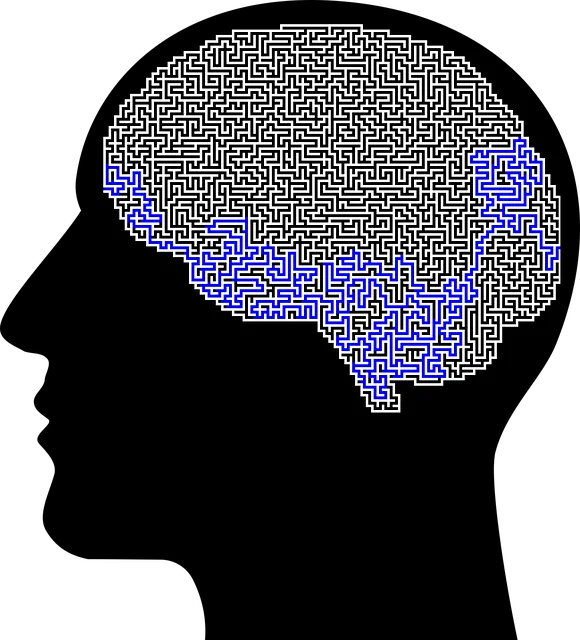The Kaiser Permanente Mental Health Access Center in Lone Tree employs a multi-faceted evaluation strategy, combining quantitative (attendance rates, survey analysis) and qualitative (interviews, focus groups) methods to assess their mental wellness program's impact. This approach, utilizing KPIs like service accessibility and client satisfaction, ensures the program aligns with participants' unique needs and healthcare provider burnout prevention. Regular Stress Management Workshops provide valuable data for these assessments.
Mental wellness programs, such as those offered at the Kaiser Permanente Mental Health Access Center in Lone Tree, require robust evaluation methods to measure effectiveness and drive continuous improvement. This article explores essential strategies for evaluating these programs, focusing on assessing impact through both quantitative and qualitative methods, engaging stakeholders for diverse perspectives, and adopting an iterative process for ongoing enhancement. By examining key performance indicators and employing effective data collection techniques, mental health services can be tailored to better meet client needs.
- Assessing Program Impact: Metrics and Measurements
- – Overview of quantitative and qualitative evaluation methods
- – Key performance indicators (KPIs) relevant to mental health programs
Assessing Program Impact: Metrics and Measurements

Evaluating the impact of a mental wellness program is crucial for understanding its effectiveness and making informed improvements. At the Kaiser Permanente Mental Health Access Center Lone Tree, they employ various metrics to assess the success of their initiatives. These include quantitative measures like tracking participant attendance rates and completion percentages, which provide insights into program reach and engagement. Additionally, they utilize self-reported surveys to gauge changes in symptoms, mood, and overall mental health status before and after the program. Such data helps in identifying areas where the program excels or falls short.
Qualitative assessments are also integral to understanding the program’s impact on participants’ lives. This involves collecting feedback through interviews or focus groups, allowing individuals to share their personal stories of growth, stress management, and self-esteem improvement. By combining these quantitative and qualitative methods, Kaiser Permanente Lone Tree aims to comprehensively evaluate its Community Outreach Program Implementation, ensuring that it aligns with the needs and experiences of those it serves.
– Overview of quantitative and qualitative evaluation methods

The evaluation of mental wellness programs is a multifaceted process that incorporates both quantitative and qualitative methods to gain comprehensive insights. Quantitative approaches involve statistical analysis of data, such as surveys with set responses, to measure program effectiveness. These methods help in identifying trends, comparing outcomes across different groups, and quantifying changes in mental health symptoms or participant satisfaction. On the other hand, qualitative techniques offer deeper understandings through open-ended interviews, focus groups, and case studies. Participants often share personal stories, providing valuable context about their emotional healing processes, mental health awareness, and experiences with trauma support services, as seen at the Kaiser Permanente Mental Health Access Center in Lone Tree.
Combining these evaluation methods allows for a holistic assessment of a program’s impact. Quantitative data provides tangible results while qualitative insights reveal participants’ subjective experiences, including their perceptions of care, accessibility of services, and overall well-being. This dual-approach ensures that the evaluation is both rigorous and nuanced, mirroring the complex nature of mental health support and the diverse needs of those seeking it.
– Key performance indicators (KPIs) relevant to mental health programs

Mental wellness programs within healthcare institutions, such as the Kaiser Permanente Mental Health Access Center in Lone Tree, should be evaluated using specific Key Performance Indicators (KPIs) to measure their effectiveness and impact on patient outcomes and provider well-being. Relevant KPIs might include the number of individuals accessing services, wait times for appointments, client satisfaction ratings, and the percentage of clients meeting predefined recovery or wellness goals.
Furthermore, evaluating programs through the lens of Burnout Prevention Strategies for Healthcare Providers can be invaluable. This includes assessing the program’s ability to reduce provider stress, improve job satisfaction, and foster a supportive work environment that encourages Emotional Healing Processes. Regular Stress Management Workshops Organization within these centers could contribute to data collection for such KPIs, offering insights into the program’s overall success in promoting mental wellness across the board.
Evaluating mental wellness programs, such as those offered by the Kaiser Permanente Mental Health Access Center in Lone Tree, requires a comprehensive approach. By combining quantitative methods like surveys and statistics with qualitative techniques including interviews and focus groups, we can gain a holistic understanding of program effectiveness. This dual-pronged strategy ensures that both measurable outcomes and nuanced insights are captured, allowing for informed adjustments to better serve the mental health needs of the community. Incorporating relevant KPIs specifically tailored to mental health initiatives further strengthens the evaluation process, ultimately enhancing the overall impact and accessibility of these critical services.






